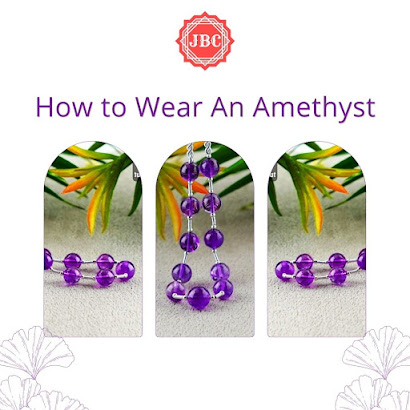8 Tips for Identifying Natural Gemstone Beads
Have you ever been looking at a strand of beads and noticed one was quite different from the others? Or have you found yourself searching for gemstone beads online, but can’t figure out which ones are natural? The best way to make sure your gems are natural and genuine is to follow these eight tips on how to identify Natural gemstone beads in the marketplace and online.
1 Familiarize yourself with the most common lab created gems
While these gems are not, technically, synthetic — meaning
they were created in a lab rather than mined out of the ground — they’re
commonly referred to as lab-created. To avoid being duped into buying a fake
gemstone, familiarize yourself with the most common lab-created gems.
2) Check bead size and shape carefully
Check bead size and shape carefully. The sizes of gemstones
vary widely, and checking carefully will prevent you from mistakenly purchasing
beads that are too large or small. This is especially important if you’re using
a unique size pattern or bead to create a set of jewelry; natural gemstones can
vary widely in size. If you’re unsure about sizing, give your retailer an
example of what you have in mind before beginning your search so they can help
ensure you find compatible beads.
3) Look at color saturation
To know that a bead is natural, you should check its color saturation. If a bead is too dark or light and looks unnatural, it’s likely man-made. Keep in mind that natural gemstones may still have colors that don’t quite match their advertised hue; these slight variations are part of what makes them unique and interesting. In short, take your time when examining beads; examine color saturation as well as other characteristics to determine whether a bead is man-made or not.
4) Test Luster, Polish, Streak and Fluorescence
The most efficient and trustworthy way to judge naturalness
is by judging these four features. Luster, Polish, Streak and Fluorescence are
all physical properties of a gem that can only be tested on a 100% natural gem.
No treatment can add or change these properties. These are what give each gem
its unique beauty.
5) Test Clarity
Clarity refers to how transparent a stone is, but it’s also
a good indicator of quality. A high-quality stone has no inclusions and is
mostly clear. Lower-quality gemstones are more opaque or contain visible
inclusions. It’s possible to improve clarity by heating—but that also changes a
gem’s appearance and can sometimes remove valuable color (e.g., heating a ruby will remove its red hue).
6) Test Hardness or Moh’s Scale of Hardness
Test Hardness or Moh’s Scale of Hardness is a rating system used
to determine how easily a gemstone will scratch. Each type of stone has a
rating and usually ranges from 1 to 10. The lower numbers indicate softer
stones and higher numbers indicate harder stones. Test Hardness is an important
factor when purchasing gemstones as it affects your ability to carve, drill, or
set these gems in jewelry or other projects where hardness matters.
7) Consider Cut
When it comes to gemstones, cut can be just as important as
clarity and color. A cut that accentuates a stone’s unique shape is what gives
a gem its sparkle. As an example, consider amethyst—the deep purple variety of quartz. Most people wouldn’t
think twice about buying an amethyst
in any shape; after all, quartz isn’t particularly expensive.
8) Inclusions
When identifying natural gemstones, your first step should
be to examine any inclusions found within each bead. Inclusions can provide
valuable information about where and how your beads were formed. For example,
inclusions of quartz are often specific to certain gem deposits and can help
identify whether your beads were mined locally or imported from another
country.
Conclusion
Always keep in mind that all gemstones are not created
equal. Even two identical-looking beads could be made from different materials or
even mined at different times, which is why it’s important to know your
suppliers and their reputations. Once you’ve identified a reputable supplier,
take a few precautions to ensure you’re getting natural gemstones and avoid
fake ones. Avoid secondhand sources when possible and always buy your gems from
reputable retailers.




Comments
Post a Comment